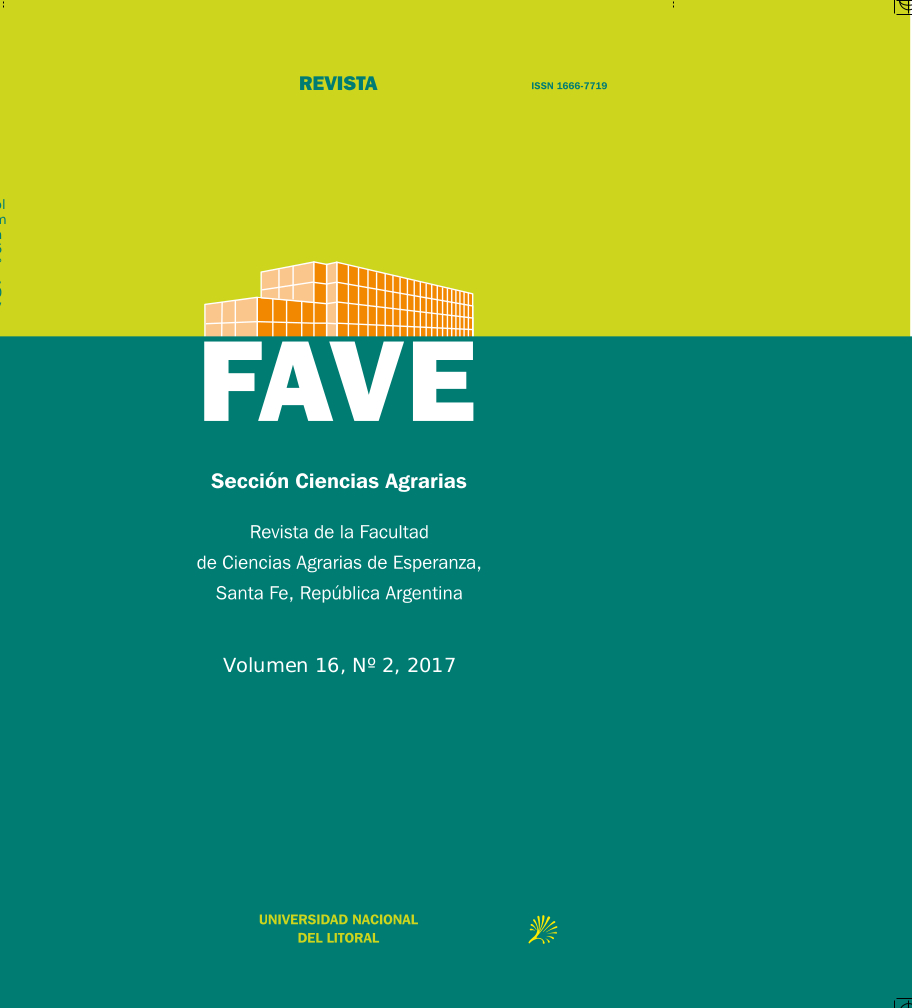Ver ítem
- xmlui.general.dspace_homeCentros Regionales y EEAsCentro Regional La Pampa - San LuisEEA AnguilArtículos científicosxmlui.ArtifactBrowser.ItemViewer.trail
- Inicio
- Centros Regionales y EEAs
- Centro Regional La Pampa - San Luis
- EEA Anguil
- Artículos científicos
- Ver ítem
Rehabilitacion de suelos hortícolas : impacto de prácticas agrícolas con uso de yeso y drenaje = Soils with physical impediments and horticultural crops: impact of agricultural management with gypsum and drainage
Resumen
El exceso de Na+, carbonatos y bicarbonatos presentes en el agua de riego incrementan el pH, la conductividad eléctrica (CE) y el porcentaje de sodio intercambiable (PSI), afectando el crecimiento de los cultivos. El objetivo de este trabajo fue cuantificar el impacto de prácticas de manejo con aplicación de yeso y drenaje en suelos petrocálcicos de La Pampa afectados por riego con aguas subterráneas bicarbonatadas sódicas. Se cultivó lechuga durante
[ver mas...]
El exceso de Na+, carbonatos y bicarbonatos presentes en el agua de riego incrementan el pH, la conductividad eléctrica (CE) y el porcentaje de sodio intercambiable (PSI), afectando el crecimiento de los cultivos. El objetivo de este trabajo fue cuantificar el impacto de prácticas de manejo con aplicación de yeso y drenaje en suelos petrocálcicos de La Pampa afectados por riego con aguas subterráneas bicarbonatadas sódicas. Se cultivó lechuga durante cuatro ciclos (500 días) en dos invernáculos diferenciados por la cantidad previa de años de riego, utilizando un diseño factorial completamente aleatorizado con 4 submuestras (unidades de medición). Los tratamientos en ambos túneles (2 años=B1 y 4 años=B2) fueron: 1) T0, testigo sin tratar; 2) T1, 3,5 Mg ha-1 de yeso agrícola, 3) T2, 3,5 Mg ha-1 de yeso agrícola + drenaje y 4) T3, drenaje. La incorporación de yeso disminuyó la concentración de Na+ y PSI signifi cativamente desde superficie hasta 0,4 m. También mejoró significativamente las condiciones físicas del suelo en el túnel B2, aspecto que se manifestó con un incremento de la productividad acumulada del cultivo de lechuga. En cambio no se encontraron diferencias significativas en el pH del suelo en ninguna de las profundidades evaluadas. Adicionalmente, la CE del suelo con los diferentes tratamientos disminuyó notablemente a partir del 2º ciclo de producción debido al incremento en la dosis de riego
[Cerrar]
The excess of Na+, carbonates and bicarbonates present in irrigation water increases the pH, the electric conductivity (EC) and the exchangeable sodium percentage (ESP) in the soil, thus affecting crop growth. The aim of this work was to quantify the use of different techniques in petro-calcium soils of La Pampa affected by irrigation with sodium bicarbonate underground waters. Lettuce was grown during four cycles (500 days) in two greenhouses
[ver mas...]
The excess of Na+, carbonates and bicarbonates present in irrigation water increases the pH, the electric conductivity (EC) and the exchangeable sodium percentage (ESP) in the soil, thus affecting crop growth. The aim of this work was to quantify the use of different techniques in petro-calcium soils of La Pampa affected by irrigation with sodium bicarbonate underground waters. Lettuce was grown during four cycles (500 days) in two greenhouses differentiated by years of irrigation, using a completely randomized factorial design with 4 sub-samples (units of measurement). Treatments in both tunnels (2=B1 and 4=B2 years) were: 1) T0, non-treated control; 2) T1, 3.5 Mg ha-1 of agricultural gypsum, 3) T2, 3.5 Mg ha-1 of agricultural gypsum + drainage, and 4) T3, drainage. Gypsum signifi cantly decreased the concentration of Na+ and ESP from the surface to 0.4 m. It also significantly improved the physical conditions of the soil in tunnel B2, which was manifested through an increase of the accumulated productivity of the lettuce crop. However, no significant differences were registered in soil pH in any of the evaluated depths. Additionally, the soil EC under the different treatments decreased notably from the 2nd production cycle onwards, due to the increase in the irrigation depth.
[Cerrar]

Autor
Fuente
FAVE. Ciencias Agrarias 16 (2) : 69-90. (2017)
Fecha
2017-12
Editorial
Universidad Nacional del Litoral. Facultad de Ciencias Agrarias
ISSN
1666-7719
Formato
pdf
Tipo de documento
artículo
Palabras Claves
Derechos de acceso
Abierto
 Excepto donde se diga explicitamente, este item se publica bajo la siguiente descripción: Creative Commons Attribution-NonCommercial-ShareAlike 2.5 Unported (CC BY-NC-SA 2.5)
Excepto donde se diga explicitamente, este item se publica bajo la siguiente descripción: Creative Commons Attribution-NonCommercial-ShareAlike 2.5 Unported (CC BY-NC-SA 2.5)


